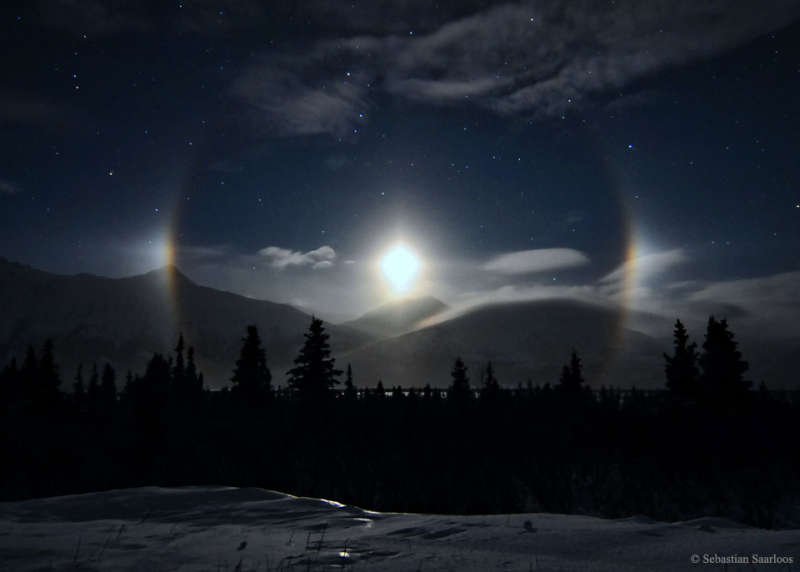
|
Credit & Copyright: Sebastian Saarloos
Explanation:
What's happened to the sky?
Moonlight illuminates a snowy scene in
this
night land and skyscape made on 2013 January from
Lower Miller Creek,
Alaska,
USA.
Overexposed near the mountainous western horizon is
the first quarter Moon itself, surrounded by an
icy halo and flanked left and right
by moondogs.
Sometimes called mock moons, a more scientific name for the luminous apparitions
is paraselenae (plural).
Analogous to a sundog or parhelion,
a paraselene is produced by moonlight refracted through thin,
hexagonal, plate-shaped ice crystals in high
cirrus clouds.
As determined by
the
crystal geometry, paraselenae are seen
at an angle of 22 degrees or more from the Moon.
Compared to the bright lunar disk,
paraselenae are faint
and easier to spot when the Moon is low.
Follow APOD on:
Facebook,
Google Plus,
Instagram, or
Twitter
|
January February March April May June July August September October November December |
| ||||||||||||||||||||||||||||||||||||||||||||||||
NASA Web Site Statements, Warnings, and Disclaimers
NASA Official: Jay Norris. Specific rights apply.
A service of: LHEA at NASA / GSFC
& Michigan Tech. U.
Based on Astronomy Picture
Of the Day
Publications with keywords: ice crystals
Publications with words: ice crystals
See also:
